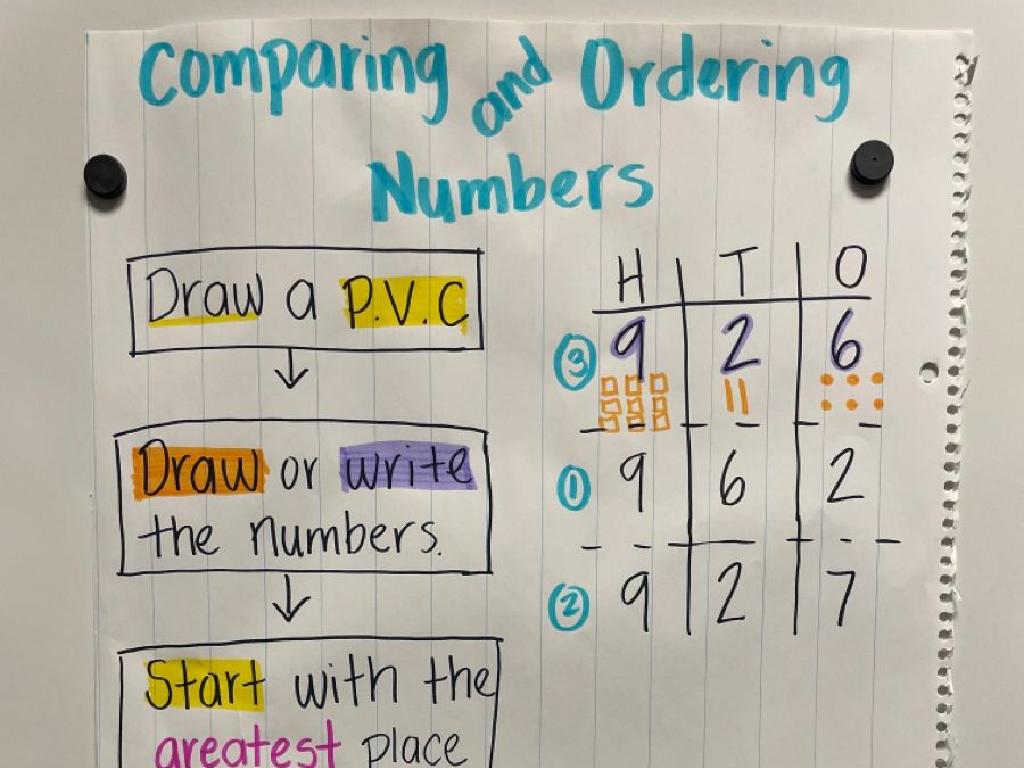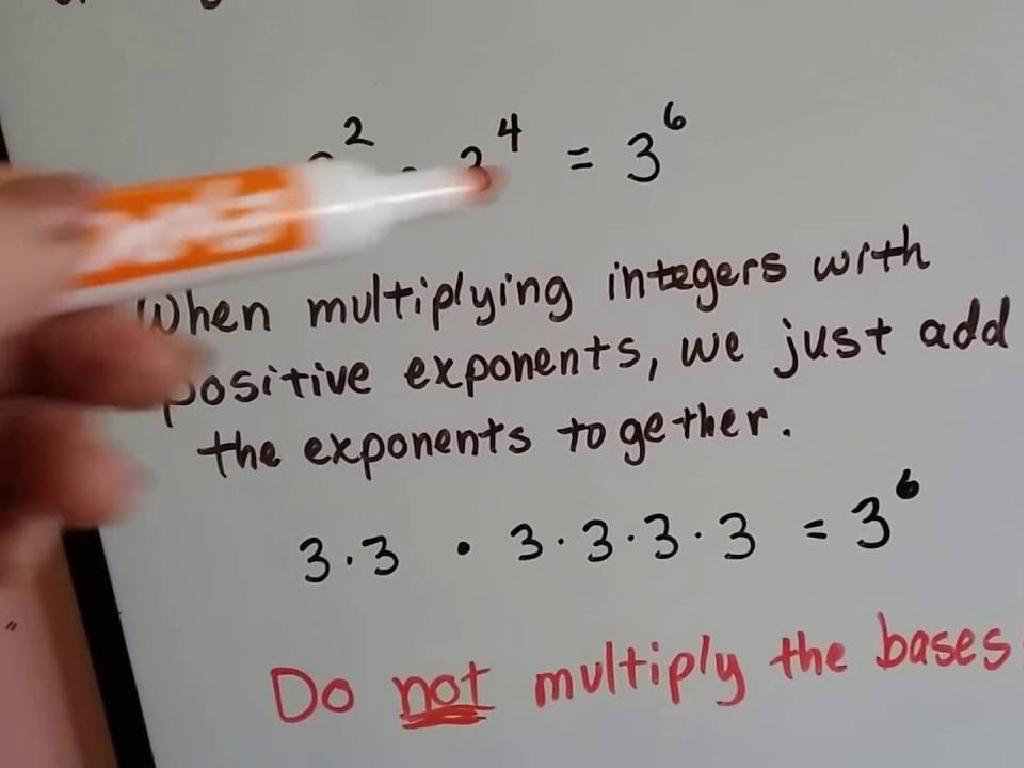Sums Of Angles In Polygons
Subject: Math
Grade: Sixth grade
Topic: Two-Dimensional Figures
Please LOG IN to download the presentation. Access is available to registered users only.
View More Content
Exploring Polygons and Their Angles
– Define polygons
– A polygon is a closed figure with straight sides, like triangles and squares.
– Real-world polygon examples
– Think of a stop sign (octagon) or a soccer ball pattern (pentagons and hexagons).
– Angles within polygons
– Each shape has a set number of angles that add up to a specific total.
– Sum of angles formula
– The sum of interior angles can be found using (n-2)×180°, where n is the number of sides.
|
Begin the lesson by defining polygons and ensuring students can identify different types, such as triangles, quadrilaterals, pentagons, etc. Use everyday examples to illustrate polygons in the real world, making the concept more relatable. Explain that the angles inside these shapes are called interior angles and have a special relationship. Introduce the formula for finding the sum of interior angles in any polygon, which is (n-2)×180°, where n is the number of sides. This formula is crucial for understanding how to calculate the sum of angles in polygons and will be the foundation for further exploration in class.
Exploring Angles in Polygons
– Understanding what an angle is
– An angle is formed by two rays with a common endpoint called the vertex.
– Exploring types of angles
– Acute (90°), Straight (180°)
– Using a protractor to measure
– A protractor helps us measure the size of an angle in degrees.
– Activity: Measuring angles
– Find and measure angles in class with a protractor.
|
Begin the lesson by defining an angle and its components: vertex and rays. Discuss the different types of angles, providing visual examples for each: acute, right, obtuse, and straight. Demonstrate how to use a protractor to measure angles, emphasizing the correct placement of the protractor’s center at the vertex and aligning one ray with the zero line. For the activity, provide students with a variety of angles to practice measuring. Encourage them to identify the type of angle before measuring. This hands-on experience will help solidify their understanding of angles and how to measure them, preparing them for learning about the sums of angles in polygons.
Sum of Angles in Triangles
– Every triangle has three angles
– Triangle angle sum is always 180°
– No matter the triangle type, the angles add up to 180°
– Proof of the angle sum property
– We’ll use geometry tools to demonstrate this property
– Class activity to prove it
– You’ll draw and measure angles to verify the sum
|
This slide introduces the fundamental concept that the sum of angles in any triangle is 180 degrees. Begin by stating that all triangles have three angles. Emphasize that regardless of the triangle’s shape whether it’s acute, obtuse, or right the total measure of its angles will always equal 180 degrees. Engage the class with a hands-on activity where they will draw different types of triangles and use protractors to measure the angles, adding them together to see that they sum up to 180 degrees. This activity will help solidify their understanding through practical application. Prepare to assist students who may struggle with measuring angles accurately and encourage group work for peer learning.
Sum of Angles in Quadrilaterals
– Quadrilaterals: four angles
– Sum of angles is 360°
– A quadrilateral’s angles add up to 360 degrees.
– Activity: Find the missing angle
– Use 360° – sum of known angles to find the unknown.
|
This slide introduces students to the concept that all quadrilaterals have four angles, and the sum of these angles is always 360 degrees. The activity is designed to help students apply this knowledge by finding the missing angle in various quadrilaterals. Provide students with different quadrilateral shapes with three angles labeled and ask them to calculate the missing angle. For the activity, consider having students work in pairs to encourage collaboration. Possible variations of the activity could include creating their own quadrilaterals with given angles, using protractors to measure angles, or solving problems that involve algebraic expressions for the unknown angle.
Sum of Angles in Polygons
– General formula for any polygon
– Steps to find angle sums
– Count sides, subtract 2, multiply by 180
– The formula: (n – 2) × 180
– For a pentagon (5 sides): (5 – 2) × 180 = 540°
– Practice with examples
– Apply formula to find angle sums in class
|
This slide introduces the general formula for calculating the sum of interior angles in any polygon. Begin by explaining that ‘n’ represents the number of sides in the polygon. To find the sum of angles, subtract 2 from the number of sides and then multiply by 180. This formula is derived from the fact that a polygon can be divided into triangles, and the sum of angles in a triangle is always 180°. Provide examples such as a pentagon, where students can apply the formula (5 – 2) × 180 to find the sum of angles is 540°. Encourage students to try the formula with different polygons and prepare to solve problems during the next class.
Class Activity: Polygon Angle Hunt
– Form small groups for the activity
– Search for polygons in the classroom
– Look for shapes like triangles, squares, etc.
– Calculate each polygon’s angle sum
– Use the formula (n-2)×180° for calculation
– Discuss findings with the class
– Share your results and methods used
|
This interactive class activity is designed to help students apply their knowledge of geometry to real-world objects. Divide the class into small groups and instruct them to find objects in the classroom that resemble polygons. Once identified, they should calculate the sum of the interior angles using the formula (n-2)×180°, where ‘n’ is the number of sides of the polygon. After calculations, each group will discuss their findings and the methods they used to determine the angle sums. This will reinforce their understanding of the concept and encourage collaborative learning. Possible variations of the activity could include finding polygons in magazines, drawing their own, or using online resources.
Conclusion: Angles in Polygons
– Recap of polygon angles
– Importance of angle knowledge
– Angles are key in geometry, navigation, and construction.
– Homework: Craft a polygon
– Use paper, sticks, or straws to make a polygon.
– Calculate your polygon’s angles
– Add up interior angles based on the formula (n-2) x 180°.
|
As we wrap up today’s lesson, we’ll revisit the key points about the sum of angles in polygons. Understanding these concepts is crucial not just in geometry, but in real-world applications like navigation and construction. For homework, students are encouraged to get creative and construct their own polygon using any materials they like. They should then apply the formula (n-2) x 180°, where ‘n’ is the number of sides, to find the sum of the interior angles. This hands-on activity will help solidify their understanding of the relationship between the number of sides and the sum of angles in polygons.





